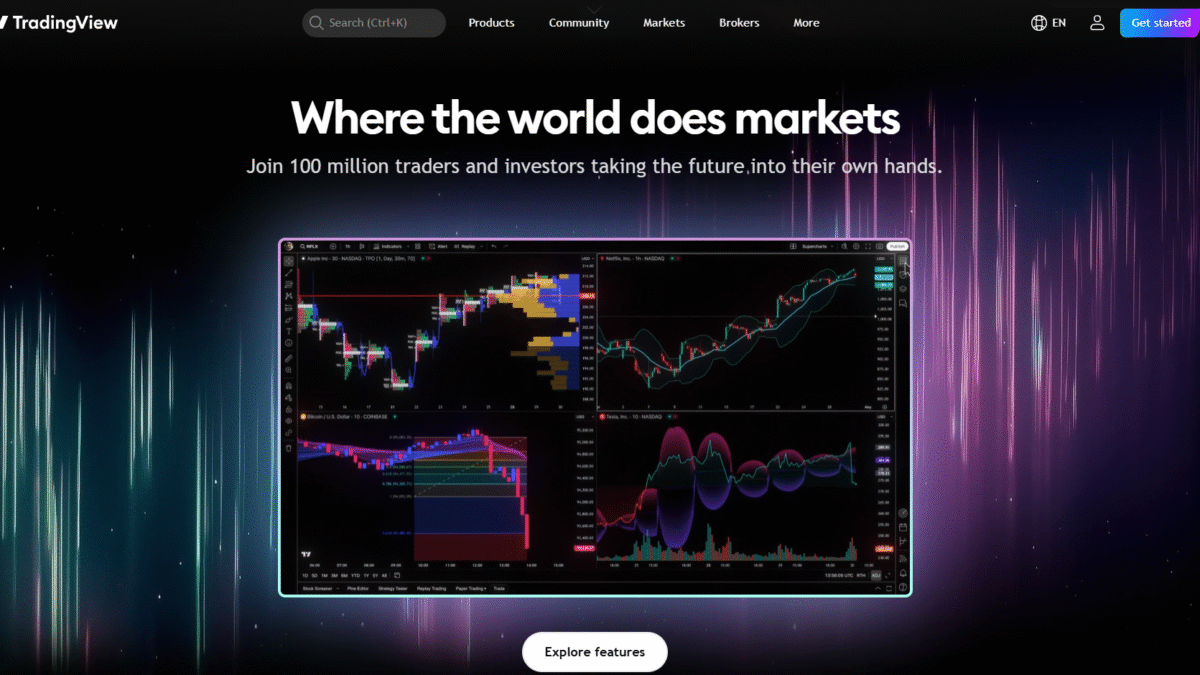
How to Choose the Best Futures Brokers for Profitable Trading
Choosing the right futures brokers can make all the difference between solid gains and costly mistakes. With dozens of firms vying for your business, you need a clear framework to compare regulation, fees, technology and support. You’ll also want an edge in market analysis—this is where TradingView steps in. As a community of over 100 million traders and investors, TradingView offers the real-time charts, backtesting environment and alerts you need to spot futures opportunities early. Get $15 Welcome Bonus on Signup and start researching markets like a pro.
1. Regulation and Security
The first question to ask any prospective broker is: how are they regulated? Top-tier authorities such as the CFTC, NFA (US), FCA (UK) or ASIC (Australia) impose strict capital and reporting requirements. A regulated broker:
- Holds client funds in segregated accounts
- Undergoes regular audits
- Adheres to leverage and margin limits
Always verify registration numbers on official regulator websites. Avoid offshore or unlicensed firms that might cut corners on fund protection.
2. Cost Structure and Fees
Trading futures involves commissions, exchange and clearing fees, overnight financing and possible platform charges. Compare:
- Per-contract commission: From a few cents to a few dollars.
- Exchange & regulatory fees: Often passed through by the broker.
- Data subscriptions: Level-2 quotes, heatmaps and advanced charting may carry extra cost.
- Margin requirements: Higher margins reduce risk but tie up capital.
Look for transparent fee schedules and volume discounts if you trade high frequency.
3. Trading Platforms and Analysis Tools
Speedy order execution and insightful analysis go hand in hand. Beyond the broker’s native platform, serious futures traders integrate specialized software. TradingView delivers:
- Supercharged Supercharts: Up to 16 synchronized charts, custom timeframes, spread formulas and command-driven search.
- Technical Indicators: 400+ built-in indicators, 100,000+ public scripts, multi-timeframe analysis and auto chart patterns.
- Bar Replay: Rewind market action, simulate trades on historical data, test strategies at nine speeds.
- Alerts: Cloud-based, Pine Script-powered alerts on price levels, drawing tools or custom scripts—delivered on any device.
Integrating this research platform with your futures broker account means you can generate signals and execute without switching windows. Get $15 Welcome Bonus on Signup to explore premium features risk-free.
4. Order Execution Quality and Liquidity
Look for brokers that provide direct market access or use low-latency routing to exchanges. Key metrics include:
- Fill rates: Percentage of orders executed at desired price or better.
- Slippage: Difference between expected and executed price.
- Latency: Milliseconds matter when markets move fast.
Review third-party execution reports or ask for proof of performance if you trade large volumes.
5. Margin, Leverage and Risk Controls
Futures trading margins vary by contract type and underlying asset. While higher leverage amplifies profit potential, it magnifies losses. A reliable broker will offer:
- Customizable leverage: Adjust margin levels to match your risk appetite.
- Stop-loss and bracket orders: Lock in profits and cap downside automatically.
- Risk-management tools: Real-time margin calculators and notifications.
Be wary of brokers pushing maximum leverage without educating you on stress-testing strategies.
6. Customer Support and Educational Resources
Effective support channels—phone, chat and email—should be available 24/5. Top brokers provide:
- Dedicated futures desk specialists
- Webinars and live tutorials
- Knowledge base with articles on contract specifications, rollover rules and margin calls
Supplement broker training with community-driven platforms like TradingView, where thousands of traders share strategies, scripts and analysis.
7. Reputation, Reviews and Community Feedback
Scan online forums, industry publications and verified review sites for real user experiences. Watch for comments on execution reliability, fund withdrawals and hidden fees. A solid broker will have a track record spanning years, positive testimonials and transparent policies.
8. Integrating Research with Execution
To trade futures profitably, combine a powerful charting solution with a trusted broker. With TradingView you can:
- Develop custom Pine Script strategies and backtest directly on futures data.
- Set alerts on key price levels or technical patterns and receive instant notifications.
- Paper trade virtual futures contracts to refine your entry and exit rules before risking real capital.
Link your broker account inside TradingView’s Supercharts for seamless order placement and live monitoring of open positions.
9. Step-by-Step Comparison Process
1. Define your priorities: cost, speed, customer service, global market access.
2. Shortlist regulated brokers with transparent fee structures.
3. Compare platform demos or free trials side by side.
4. Test research workflows on TradingView to ensure you spot trade setups efficiently.
5. Start small on a live account, scale up as you build confidence and refine your edge.
10. Final Thoughts
Finding the best futures brokers involves more than chasing the lowest commission. You need reliability, rapid execution, risk management tools and actionable market insight. By pairing a top-rated broker with TradingView’s advanced charts, backtesting and alerts, you gain a holistic edge in timing and strategy. Ready to elevate your futures trading? Get $15 Welcome Bonus on Signup and join the 100 million users turning analysis into profitable trades.
